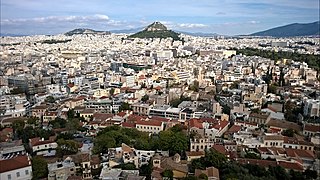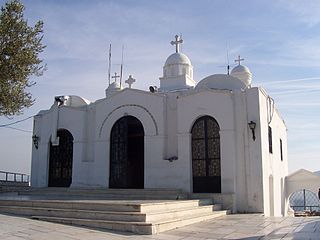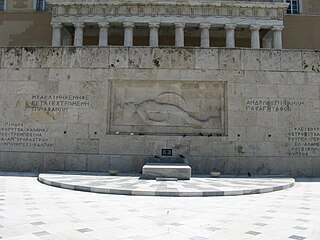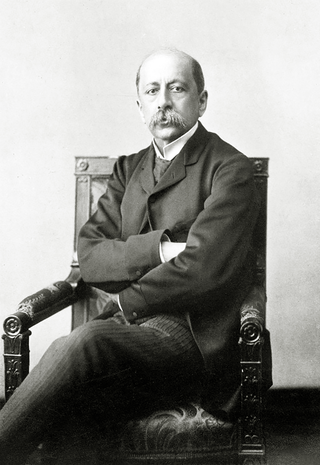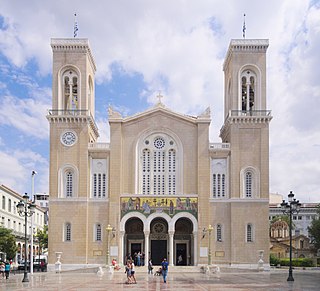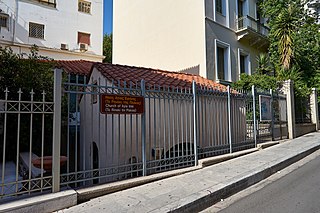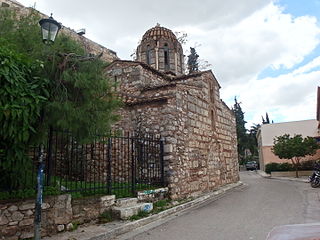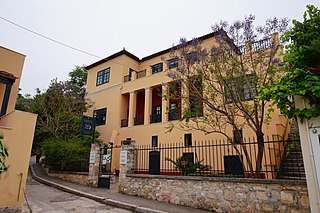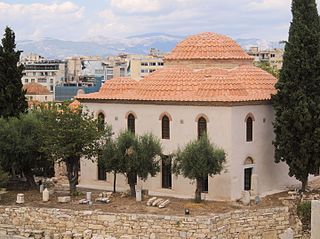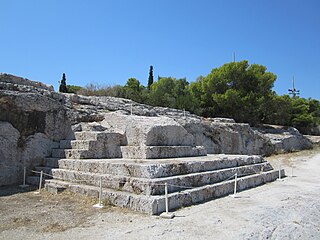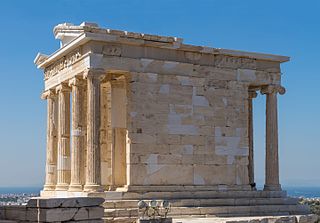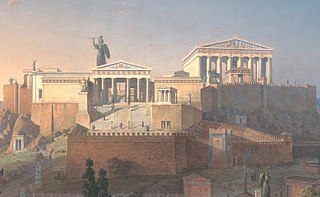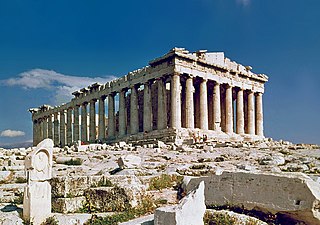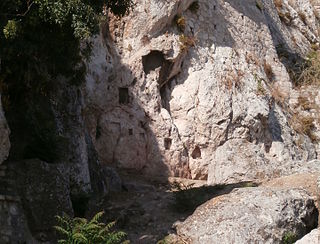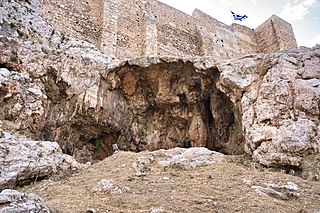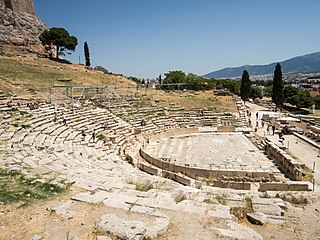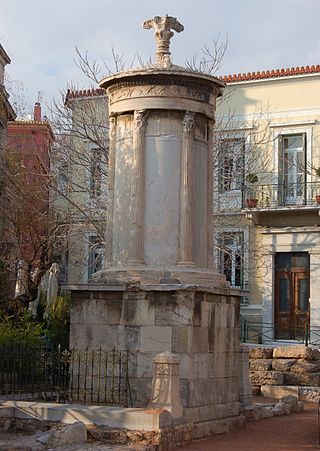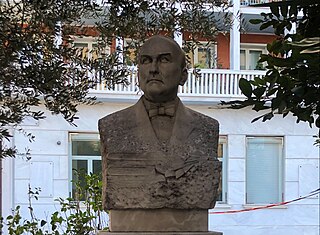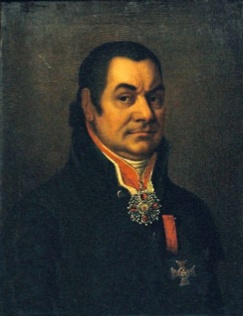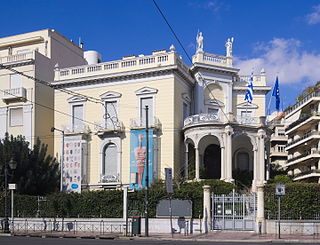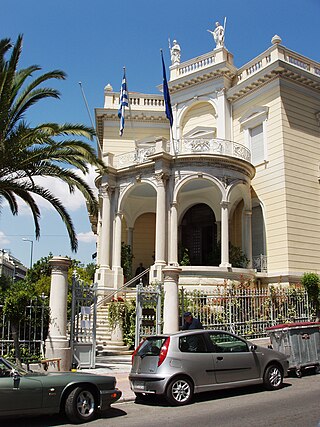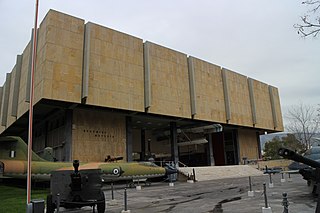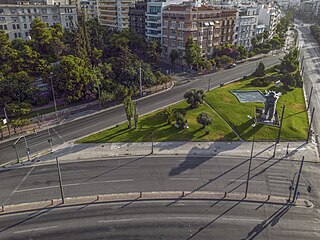Self-guided Sightseeing Tour #9 in Athens, Greece
Legend
Guided Free Walking Tours
Book free guided walking tours in Athens.
Guided Sightseeing Tours
Book guided sightseeing tours and activities in Athens.
Tour Facts
11.7 km
583 m
Experience Athens in Greece in a whole new way with our free self-guided sightseeing tour. This site not only offers you practical information and insider tips, but also a rich variety of activities and sights you shouldn't miss. Whether you love art and culture, want to explore historical sites or simply want to experience the vibrant atmosphere of a lively city - you'll find everything you need for your personal adventure here.
Activities in AthensIndividual Sights in AthensSight 1: Lykavitos
Mount Lycabettus, also known as Lycabettos, Lykabettos or Lykavittos, is a Cretaceous limestone hill in the Greek capital Athens. At 277 meters (908 feet) above sea level, its summit is the highest point in Central Athens and pine trees cover its base. The name also refers to the residential neighbourhood immediately below the east of the hill.
Sight 2: Chapel of St. George
Agios Georgios is a medieval church in Attica, located on top of Lycabettus Hill. In the depictions of travelers, it seems that there was a temple in this area in the past. Also, thanks to two inscriptions found, we know that originally there was the "cemetery of Anastasios Harkeos and Ev. Orandas" as well as "Cemetery of interest". When the first church fell into ruins, a new single-aisled, basilica temple was built on the same foundations for Agios Georgios. On the floor there is an inscription indicating that the chapel of Agios Georgios was established by the Metropolitan of Athens Benedict (1782-1785). Later the church was expanded with the addition of two chapels, Prophet Elias and Agios Konstantinos.
Sight 3: Odysseas Elytis
Odysseas Elytis was a Greek poet, man of letters, essayist and translator, regarded as the definitive exponent of romantic modernism in Greece and the world. He is one of the most praised poets of the second half of the twentieth century, with his Axion Esti "regarded as a monument of contemporary poetry". In 1979, he was awarded the Nobel Prize in Literature.
Sight 4: Tomb of Unknown Soldier
The Tomb of the Unknown Soldier is located in Syntagma Square, in front of the Hellenic Parliament building. It was constructed in the 1930s and, like all monuments of this type, is a cenotaph in honor of the fallen in the wars. The first monument to the unknown soldier of the struggle of 1821 was erected on January 16, 1858, by decision of the Municipality of Hermoupolis, Syros.
Sight 5: National Historic Museum
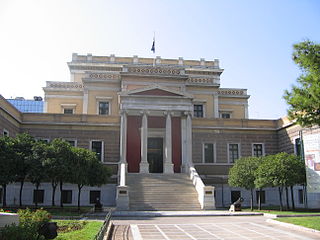
The National Historical Museum is a historical museum in Athens. Founded in 1882, is the oldest of its kind in Greece. It is located in the Old Parliament House at Stadiou Street in Athens, which housed the Hellenic Parliament from 1875 until 1932. A branch of the National History Museum has been organized and operated there since 2001.
Sight 6: Charilaos Trikoupis
Charilaos Trikoupis was a Greek politician who served as a Prime Minister of Greece seven times from 1875 until 1895.
Sight 7: Metropolitan Cathedral of Athens
The Metropolitan Cathedral of the Annunciation, popularly known as the Metropolis or Mitropoli, is the cathedral church of the Archbishopric of Athens and all of Greece.
Sight 8: Αγία Ειρήνη
Agia Irini, also known as Rinaki, is a single-aisled private church located on Navarchou Nikodimou Street in Plaka, Athens.
Sight 9: Holy Unmercenaries
Saints Anargyri is a medieval church, in the Plaka district, in Athens, which is located on the northern footsteps of the Acropolis, on the contribution of Rectaniou and Erechtheus Streets. Its alternative name as Kolokynthos is associated with the Kolokynthi family, Athenian family, which is allegedly the owner of the monastery's area during the 17th century. From the 18th century until today, the site has been part of the Patriarchate of Jerusalem and is a metochi, while, in the past, the place of residence of Exarch, the Holy Sepulcher. It was erected during the 17th century, initially functioning as the Catholic female monastery, which included it. It is a single -aisled arched basilica with a cylindrical dome that was exclusively formed in Athens during the Ottoman period of domination, influenced by the Ottoman public buildings. It is built at the site of Aphrodite's earlier temple, as well as, according to tradition, on graves of members of the Paleologian family. In this temple, the Holy Light of Resurrection reaches first in Greece by Jerusalem. The day before becoming a magnificent Epitaph on the streets of the area.
Sight 10: Transfiguration of the Saviour
The Church of the Transfiguration of the Lord is a small Byzantine church in Athens, in the Plaka district, at the northern foot of the Acropolis. It was erected at the end of the XI century.
Sight 11: Athens University History Museum
The Athens University Museum is a museum in Plaka, Athens, Greece.
Sight 12: Λουτρό των Αέρηδων
The Aerides Bath or Bath House of the Winds is the only surviving Ottoman-era public Turkish bath surviving in Athens, Greece.
Sight 13: Pantheon
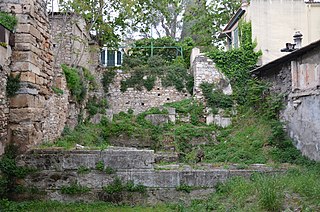
The Pantheon was an ancient Greek temple dedicated to all the gods, in the Roman agora of Athens, Greece. It was erected during the reign of Emperor Hadrian, more precisely towards 130 AD.
Sight 14: Fethiye Mosque
The Fethiye mosque is a building built in the second half of the 17th century in the center of Athens.
Sight 15: Tzistarakis Mosque
Get Ticket*Tzistarakis Mosque is an Ottoman mosque, built in 1759, in Monastiraki Square, central Athens, Greece. It is now functioning as an annex of the Museum of Greek Folk Art.
Sight 16: Eleusinion
Eleusinion, also called the City Eleusinion was a sanctuary on the lower part of the north slope of the Acropolis in Athens, Greece, dedicated to Demeter and Kore (Persephone). It was the central hub of Eleusinian Mysteries within Athens and the starting point for the annual procession to Eleusis, in the northwest of Attica. Religious activity is attested in the area from the 7th century BC and construction took place throughout late Archaic, Classical, Hellenistic, and Roman periods. The sanctuary was enclosed within the new city walls built after the Herulian sack of Athens in AD 267 and it remained in use until the late fourth century AD.
Sight 17: Εθνικό Αστεροσκοπείο Αθηνών
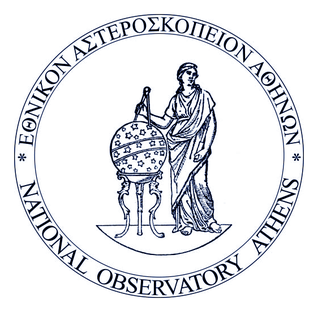
The National Observatory of Athens is a research institute in Athens, Greece. Founded in 1842, it is the oldest research foundation in Greece. The Observatory was the first scientific research institute built after Greece became independent in 1829, and one of the oldest research institutes in Southern Europe. It was built around the same period as the United States Naval Observatory.
Sight 18: Pnyx
The Pnyx is a hill or hillside in central Athens, the capital of Greece. Beginning as early as 507 BC, the Athenians gathered on the Pnyx to host their popular assemblies, thus making the hill one of the earliest and most important sites in the creation of democracy.
Sight 19: Areopagus
The Areopagus is a prominent rock outcropping located northwest of the Acropolis in Athens, Greece. Its English name is the Late Latin composite form of the Greek name Areios Pagos, translated "Hill of Ares". The name Areopagus also referred, in classical times, to the Athenian governing council, later restricted to the Athenian judicial council or court that tried cases of deliberate homicide, wounding, and religious matters, as well as cases involving arson of olive trees, because they convened in this location. The war god Ares was supposed to have been tried by the other gods on the Areopagus for the murder of Poseidon's son Halirrhothius.
Sight 20: The Temple of Athena Nike
The Temple of Athena Nike is a temple on the Acropolis of Athens, dedicated to the goddesses Athena and Nike. Built around 420 BC, the temple is the earliest fully Ionic temple on the Acropolis. It has a prominent position on a steep bastion at the south west corner of the Acropolis to the right of the entrance, the Propylaea. In contrast to the Acropolis proper, a walled sanctuary entered through the Propylaea, the Victory Sanctuary was open, entered from the Propylaea's southwest wing and from a narrow stair on the north. The sheer walls of its bastion were protected on the north, west, and south by the Nike Parapet, named for its frieze of Nikai celebrating victory and sacrificing to their patroness, Athena and Nike.
Sight 21: Athena Promachos statue place
The Athena Promachos was a colossal bronze statue of Athena sculpted by Pheidias, which stood between the Propylaea and the Parthenon on the Acropolis of Athens. Athena was the tutelary deity of Athens and the goddess of wisdom and warriors. Pheidias also sculpted two other figures of Athena on the Acropolis, the huge gold and ivory ("chryselephantine") cult image of Athena Parthenos in the Parthenon and the Lemnian Athena.
Sight 22: Parthenon
The Parthenon is a former temple on the Athenian Acropolis, Greece, that was dedicated to the goddess Athena. Its decorative sculptures are considered some of the high points of classical Greek art, and the Parthenon is considered an enduring symbol of Ancient Greece, democracy, and Western civilization.
Sight 23: Temple of Rome and Augustus
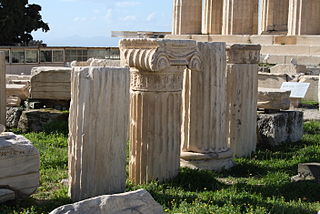
The Temple of Rome and Augustus was a small Ionic temple building on the Acropolis of Athens.
Sight 24: Pandion
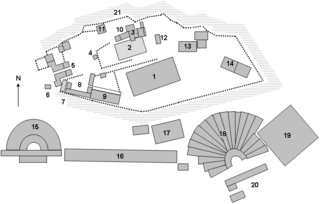
The Sanctuary of Pandion is the name sometimes given to the remains of a building located in the south-east corner of the Acropolis of Athens. Its foundations were found during the excavations for the construction of the Old Acropolis Museum (1865–1874).
Sight 25: Erechtheum
The Erechtheion or Temple of Athena Polias is an ancient Greek Ionic temple on the north side of the Acropolis, Athens, which was primarily dedicated to the goddess Athena.
Sight 26: Arriforion
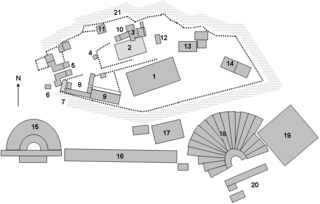
The Arrephorion or House of the Arrephoroi is a building conjectured to have been on the Acropolis of Athens based on a passage in Pausanias. The discovery of the foundations of a substantial building on the north-west edge of the Acropolis has led to the identification of this structure with the Arrephorion.
Sight 27: Pandroseion
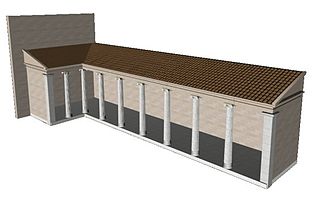
The Pandroseion was a sanctuary dedicated to Pandrosus, one of the daughters of Cecrops I, the first king of Attica Greece, located on the Acropolis of Athens. It occupied the space adjacent to the Erechtheum and the old Temple of Athena Polias.
Sight 28: Sanctuary of Eros and Aphrodite
The Sanctuary of Aphrodite and Eros was an ancient Greek sanctuary dedicated to Aphrodite and Eros, on the northern slope of the Acropolis hill of Athens.
Sight 29: Sanctuary of Aglauros
The Aglaureion, or the Sanctuary of Aglauros, was an ancient sanctuary located in the Acropolis in Athens, Greece. It was dedicated to Aglauros, a Greek mythological figure who was the daughter of King Cecrops and the sister of Erysichthon, Pandrosus, and Herse. The sanctuary was believed to be the site where Aglauros had sacrificed herself to protect the city from invasion.
Sight 30: Theatre of Dionysus
The Theatre of Dionysus is an ancient Greek theatre in Athens. It is built on the south slope of the Acropolis hill, originally part of the sanctuary of Dionysus Eleuthereus. The first orchestra terrace was constructed on the site around the mid- to late-sixth century BC, where it hosted the City Dionysia. The theatre reached its fullest extent in the fourth century BC under the epistates of Lycurgus when it would have had a capacity of up to 25,000, and was in continuous use down to the Roman period. The theatre then fell into decay in the Byzantine era and was not identified, excavated and restored to its current condition until the nineteenth century.
Sight 31: Choragic Monument of Lysicrates
The Lysikratus monument, also known as Diogenes' lantern, is a stone -built stone building, the best surviving sponsorship of antiquity. It is located in Athens, on the ancient Tripods Road and was built by Lysikratis in 335-334 BC. In order to support and highlight an important object at its top: the bronze tripod given to him as a prize for his role as a sponsor of the winning play in the latest dramatic struggles. The sponsors were wealthy citizens who took over the formation of the dance, that is, the group of people who participated in plays and official ceremonies. The bronze tripod was the first prize of the theatrical events and was awarded to the sponsor of the dramatic work. The tripods were assumed to the sanctuary of Dionysus or placed on the neighboring tripod road. In order to expose themselves in a more magnificent way, the tripods sometimes entered a high basis, which could be in the form of a column, or even a Naisse -shaped monument, such as that of Lysikratos.
Sight 32: Τίμος Μωραϊτίνης
Timos Moraitinis was a Greek playwright, publisher, journalist, novelist and poet.
Sight 33: Ioannis Varvakis
Ioannis Varvakis, also known as Ivan Andreevich Varvatsi, was a Greek privateer, benefactor, and member of the Filiki Eteria.
Sight 34: Benaki Museum
Get Ticket*The Benaki Museum, established and endowed in 1930 by Antonis Benakis in memory of his father Emmanuel Benakis, is housed in the Benakis family mansion in Athens, Greece. The museum houses Greek works of art from the prehistorical to the modern times, an extensive collection of Asian art, hosts periodic exhibitions and maintains a state-of-the-art restoration and conservation workshop. Although the museum initially housed a collection that included Islamic art, Chinese porcelain and exhibits on toys, its 2000 re-opening led to the creation of satellite museums that focused on specific collections, allowing the main museum to focus on Greek culture over the span of the country's history. This Museum in Athens houses over 100,000 artifacts from Greek history and showcases the many eras, civilizations and cultures which have influenced the development of Greece. Spread over a number of locations, the museum ranks among Greece’s foremost cultural institutions.
Sight 35: Museum of Cycladic Art
The Nicholas P. Goulandris Foundation - Museum of Cycladic Art is a museum in Athens that houses a notable collection of artifacts of Cycladic art.
Sight 36: Stathatos Mansion
Stathatos Mansion is a neoclassical villa on Vasilissis Sofias Avenue, Athens, Greece. Built for the Stathatos family in 1895, today it is part of the Goulandris Museum of Cycladic Art.
Sight 37: Byzantine and Christian Museum
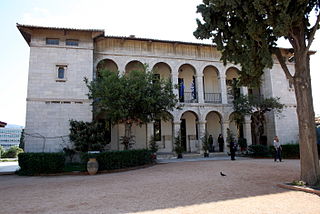
The Byzantine and Christian Museum is situated at Vassilissis Sofias Avenue in Athens, Greece.
Sight 38: War Museum
The Athens War Museum is the military museum of the Greek Armed Forces. It is located at the Athens city center and it is served by the Athens Metro station of Evangelismos.
Sight 39: Πλατεία Μεγάλης του Γένους Σχολής
The Great School Square is located in Athens opposite the Evangelismos Hospital and on Vasilissis Sofias Avenue, at the height of the Hilton Hotel.
Share
Disclaimer Please be aware of your surroundings and do not enter private property. We are not liable for any damages that occur during the tours.
GPX-Download For navigation apps and GPS devices you can download the tour as a GPX file.
